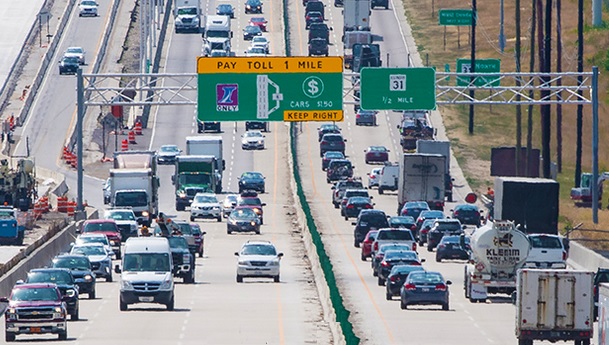HNTB
It' no secret that connected and autonomous vehicle technology is just around the corner, and will profoundly affect the U.S. transportation network. New developments promise to bring sweeping change to mobility, help improve safety and alter urban layouts, sooner than we may realize.
The U.S. government closely monitors these technologies, and is preparing corresponding legislation. In fact, the U.S. House recently passed the SELF DRIVE Act, H.R. 3388, which will "modernize the federal role in ensuring the safety of highly automated vehicles as it relates to design, construction and performance, by encouraging the testing and deployment of such vehicles."
Additionally, it is anticipated the National Highway Traffic Safety Administration (NHTSA) will move to require all new vehicles be equipped with vehicle-to-vehicle communication capabilities over the next two years.
This federal action means it is vital for multiple modes of transportation to be ready for emerging mobility technologies — and toll facilities are no exception.
With this knowledge, toll agencies have two choices: invest to prepare their systems to leverage these coming technologies, or maintain status quo and risk falling behind, potentially being unprepared.
It seems like an obvious choice, but many toll agencies, understandably, have reservations or may not be in a position to invest.

One common barrier is the perceived risk of investing in upgrades to accommodate these new technologies. Agencies fear their investment might miss the mark, and are hesitant to invest in a technology today that could become obsolete tomorrow. While this concern is valid and real, not preparing for connected and autonomous vehicle technologies and their apparent benefits also carries risk.
An agency would not want to miss crucial opportunities to improve safety, demonstrate strong customer service and relieve congestion on its facilities. Additionally, if emerging technologies eventually include electronic payment options, unprepared agencies could miss huge opportunities for more efficient revenue collection.
The importance of the right investment is undeniable, and given the certainty of these technologies, the rewards seem to outweigh the risks.
Not all agencies are hesitant to invest. HNTB closely monitors the toll market response to emerging mobility technologies, and many toll agencies are demonstrating a willingness to become early adopters. These agencies are completing needs assessments, opening test facilities, and even planning or participating in connected and autonomous vehicle pilot programs. They acknowledge a future that includes connected and autonomous vehicles, and are committed to spending time today planning for tomorrow. These are the agencies that are leading the way by taking prudent risks and laying a framework that other agencies
can follow.
There are other agencies that are at a crossroads. They recognize that investment is important, but are unsure of where to begin. For those agencies, a good first step is determining what goals they would like to accomplish through connected- and autonomous-vehicle integration. These goals could include improved safety, system efficiency, innovative payment options or congestion relief.
Agencies should conduct a needs-assessment to identify areas for improvement before integration with emerging mobility technologies
Once goals are set, agencies should conduct a needs-assessment to identify areas for improvement before integration with emerging mobility technologies. A needs-assessment should identify applications and technologies the toll agency should invest in, as well as pilot programs and stakeholders to involve. Agencies also should conduct a technology assessment to evaluate new technologies and their readiness for deployment.
Once connected and automated vehicles are on our roads, agencies can expect major changes on their facilities. To consider just a few, these vehicles are designed to stay in their lanes automatically, so lane-widths could be reduced.
Also, space between vehicles could be reduced, which would increase lane capacity and, in turn, potentially increase revenue.
And finally, these vehicles will likely come with a connected payment capability, which could impact the toll industry' approach to toll gantries and infrastructure.
A key question will be: What changes can be incorporated during the disruptive period when the vehicle fleet is still "mixed" with conventional vehicles and connected and autonomous vehicles?
Potentially, lanes that accommodate connected and autonomous vehicles could be developed to leverage these benefits.
These changes are exciting for toll agencies. They hold the potential to eliminate accidents, enhance customer service, reduce congestion and empower an agency to maintain reliable systems. To reap these benefits, toll agencies need to plan carefully and take the appropriate actions now to ensure their future customers have access to the safest, most efficient and innovative facilities possible.




